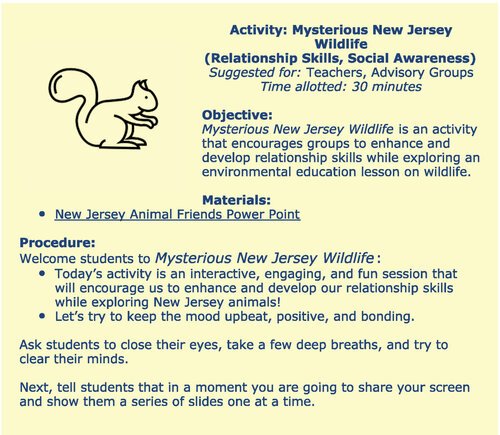The Value of Social Emotional Learning (SEL) in Difficult Times
/Senior Program Manager, Ron Franco, leads SEL and STEM activities during Wilderness Leadership School.
As a former high school science teacher, I can tell you that there is always a lot to think about when it comes to planning lessons and managing a classroom. At the forefront of most “teacher-brains” is content: How should I teach this concept? When will I get to that before our standardized tests? Unfortunately, one of the things furthest from my mind was incorporating a comprehensive social emotional learning curriculum when I was trying to find the time, energy, and funds to include more projects; make sure my students did better on standardized tests; and scaffold lessons to suit individual talents and needs.
COVID-19 has shown us that learning isn’t just about content. It is about feeling connected, being able to communicate, and having a safe space to feel a sense of purpose and belonging.
This post written by Emma García and Elaine Weiss of the Economic Policy Institute showcases why school policies and curricula need to change from focusing solely on content to putting social-emotional learning front and center. Staggering statistics including the fact that mental-health emergency room visits by middle- and high-school aged students have increased by 31% highlight how children need support to deal with their trauma, emotions, and grief.
When schools abruptly closed their doors for two weeks of “remote learning,” students and teachers thought they were in for a mini-vacation. But two weeks turned to four weeks and four weeks turned to four months and here we are, almost two years later still dealing with the turbulence of the pandemic. I tried to help my students cope by giving them hands-on assignments and sending personal emails and messages when they seemed to be falling behind or despondent. One student was a freshman in an honors biology class who was smart, cared about his academics, and provided insight into our daily conversations, until he lost his mom to COVID-19. When I sent an email after I learned of his mom’s passing, he replied that I was the only teacher to do so and that it really meant a lot to him. From then on, I made sure to email him occasionally to check in and give him the opportunity to talk even though I was not a counselor or social worker. I allowed him time and space to grieve and encouraged him to participate in class at a level that was comfortable for him.
The benefits of social emotional learning are undeniable. This brief written by the Collaborative for Academic, Social, and Emotional Learning (CASEL) in collaboration with The National Center for Mental Health Promotion and Youth Violence Prevention found that SEL programs can have big benefits. After analyzing over 200 studies of different school based SEL programs, they found that participants showed a 9% decrease in conduct problems, such as classroom misbehavior and aggression; a 10% decrease in emotional distress, such as anxiety and depression; a 9% improvement in attitudes about self, others, and school; a 23% improvement in social-emotional skills; a 9% improvement in school and classroom behavior; and an 11% improvement in achievement test scores.
The Princeton-Blairstown Center (PBC) believes so strongly that social emotional learning should be a priority that it is the basis for our mission. As we all continue to deal with the fallout of the pandemic, SEL programs are not only beneficial, but essential to students’ emotional and academic success. PBC is providing weekly SEL resources for teachers and educators to use in their classrooms or during virtual meetings to help students manage the additional ups and downs they have had to navigate since March 2020. These weekly emails are one way that PBC can provide teachers and others who work with young people with the tools to keep students connected to their peers and caring adults.
Part of a SEL activity provided by PBC to teachers via email during the pandemic























